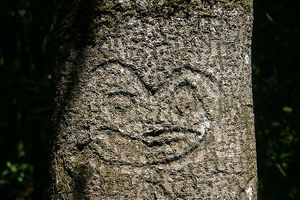Difference between revisions of "Dendroglyphs of the Chatham Islands"
| Line 6: | Line 6: | ||
==Jefferson's Record== | ==Jefferson's Record== | ||
| + | |||
| + | Christina Jefferson began cataloging the dendroglyphs | ||
| + | |||
| + | [[Image:Chatham_Island_Tree_Carving.JPG|thumb|An example of a Moriori dendroglyph]] | ||
Revision as of 20:30, 22 February 2010
History
The dendroglyphs (tree carvings) of the Chatham Islands were first cataloged in depth by Christina Jefferson between 1947 and 1956 at the urging of her advisor at the Canterbury Museum. Jefferson attempted the first complete record of these dwindling artifacts of Morioriculture.
The Moriori were a Polynesian people who migrated to the Chatham Islands sometime before 1500 and adapted a hunter-gatherer lifestyle and a culture unique to the island chain. Part of their culture included the art of momori rakau, or tree-carving, where human or other natural features were portrayed via incisions into the trunks of live kopi (karaka) trees. The purpose of these carvings is unknown, but a popular speculation is that the carvings were a medium to communicate with ancestors and otherworldly spirits. A substantial number of the dendroglyphs survive in the JM Barker (Hapupu) Historic Reserve, where they are protected from livestock grazing and souvenir hunters. Still, the carvings are being lost to tree growth and weathering so the record of these artifacts is all that will survive for future generations.Jefferson's Record
Christina Jefferson began cataloging the dendroglyphs

